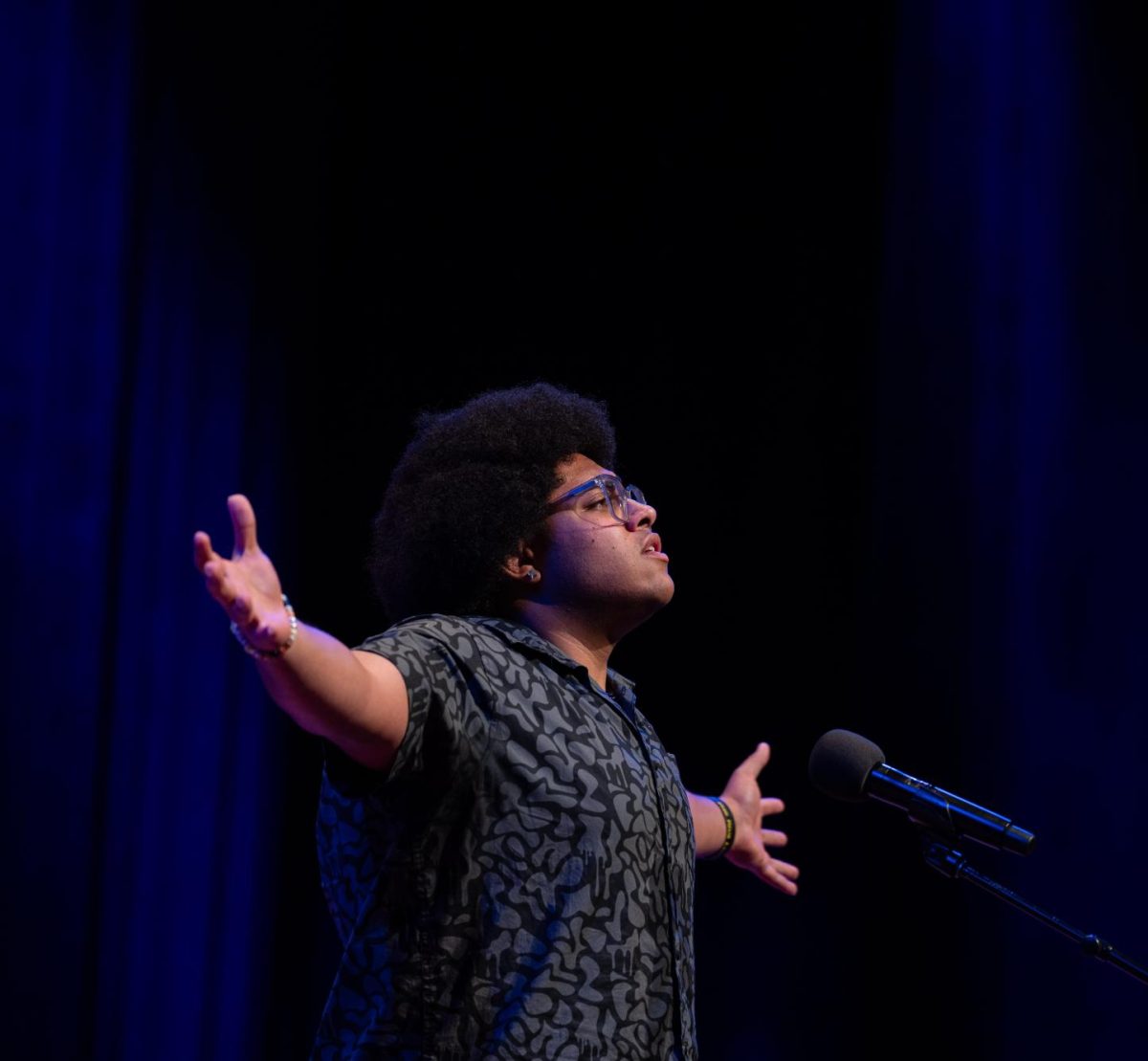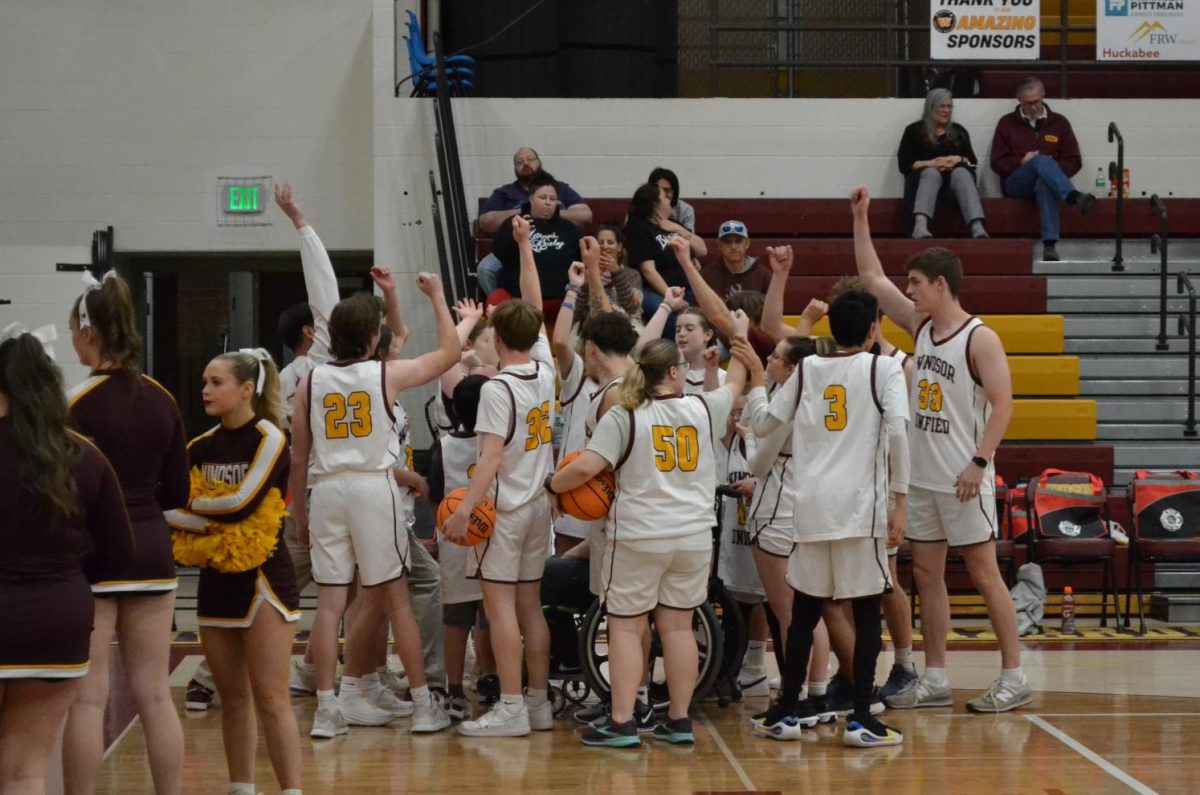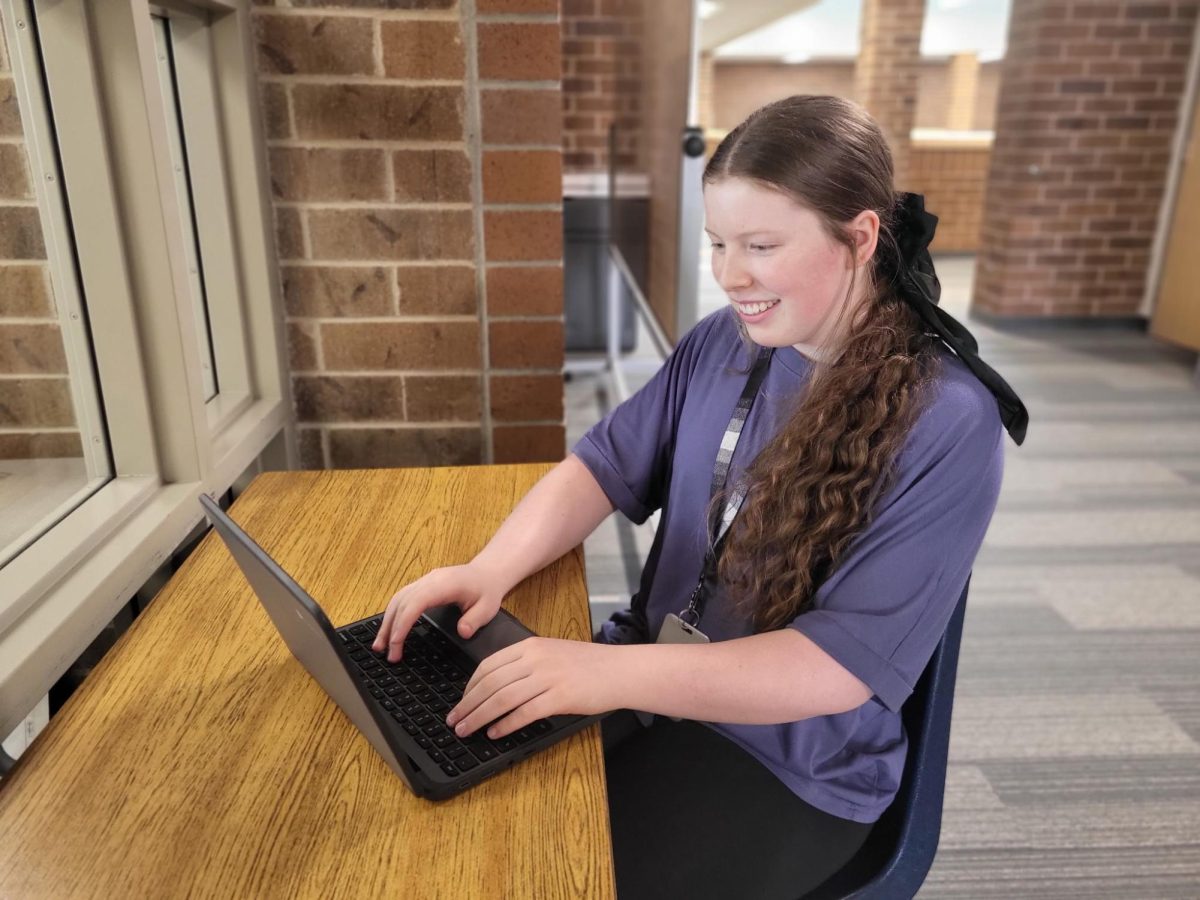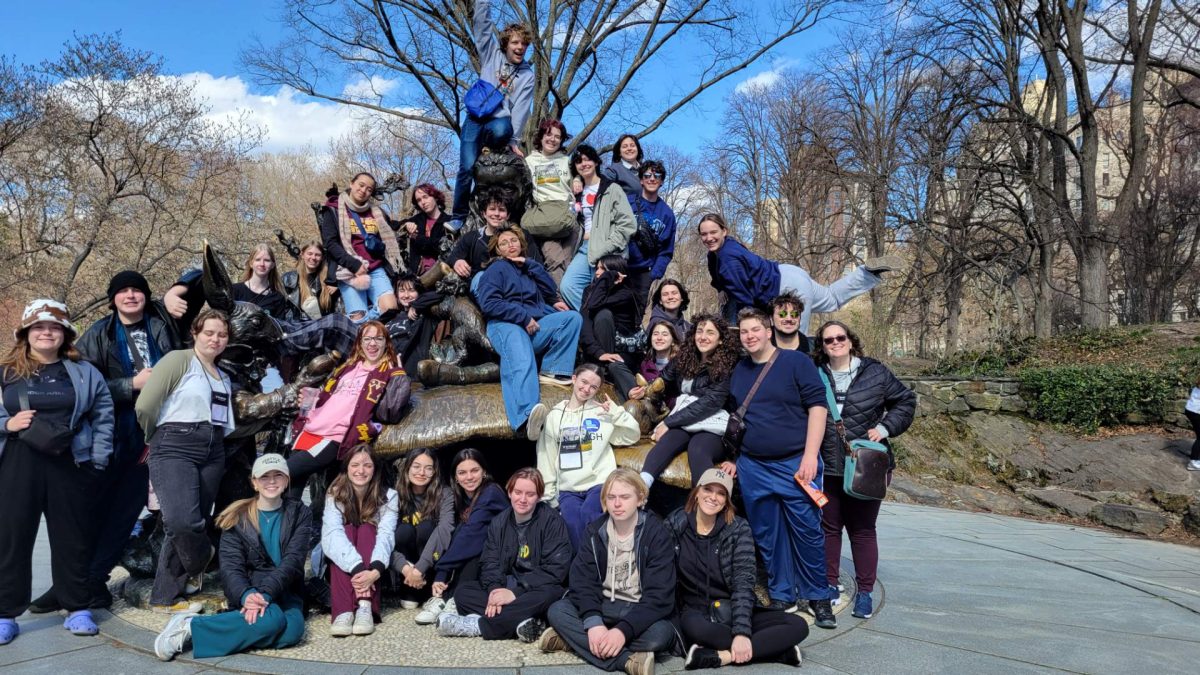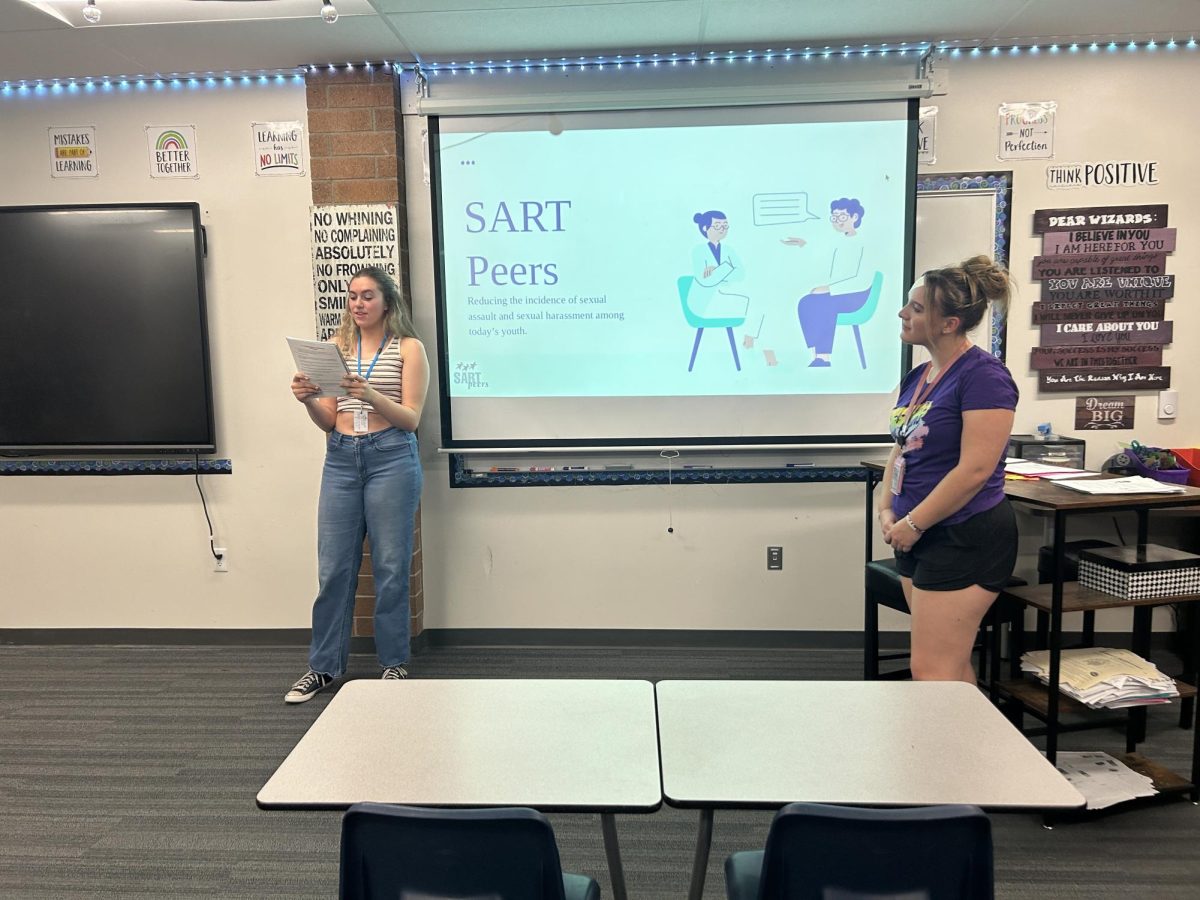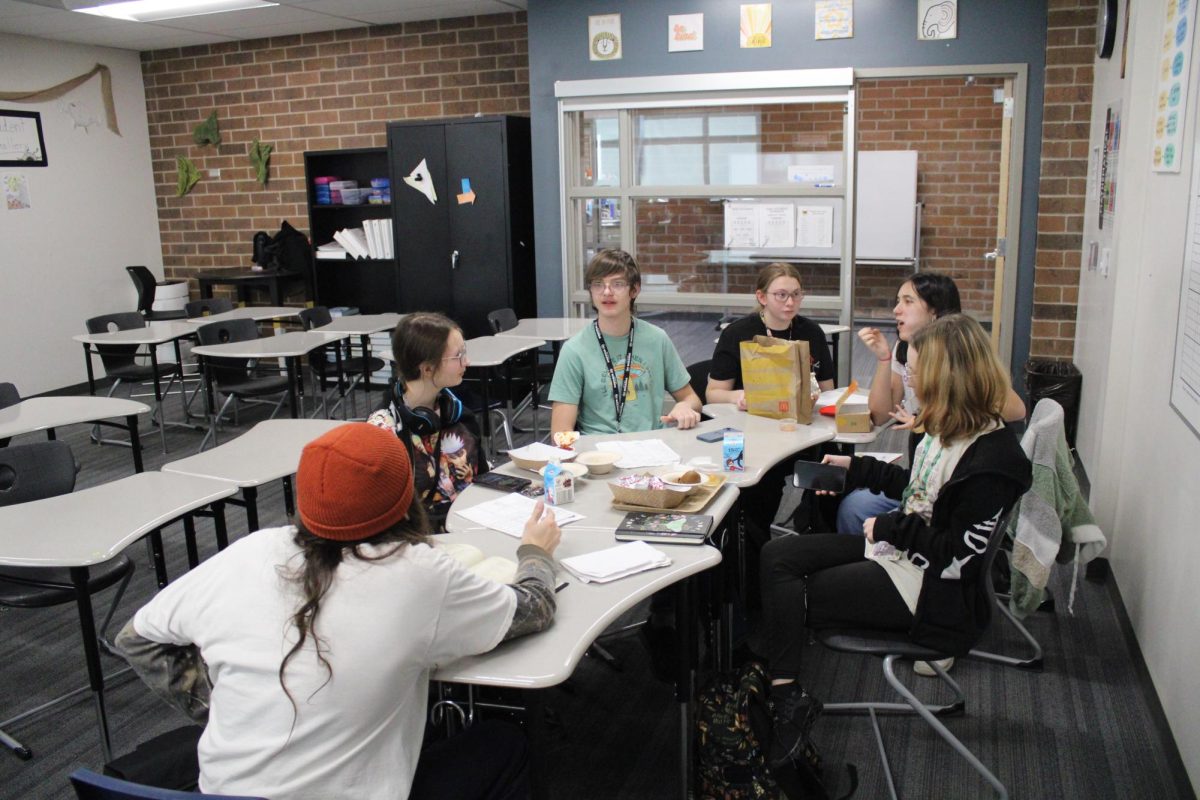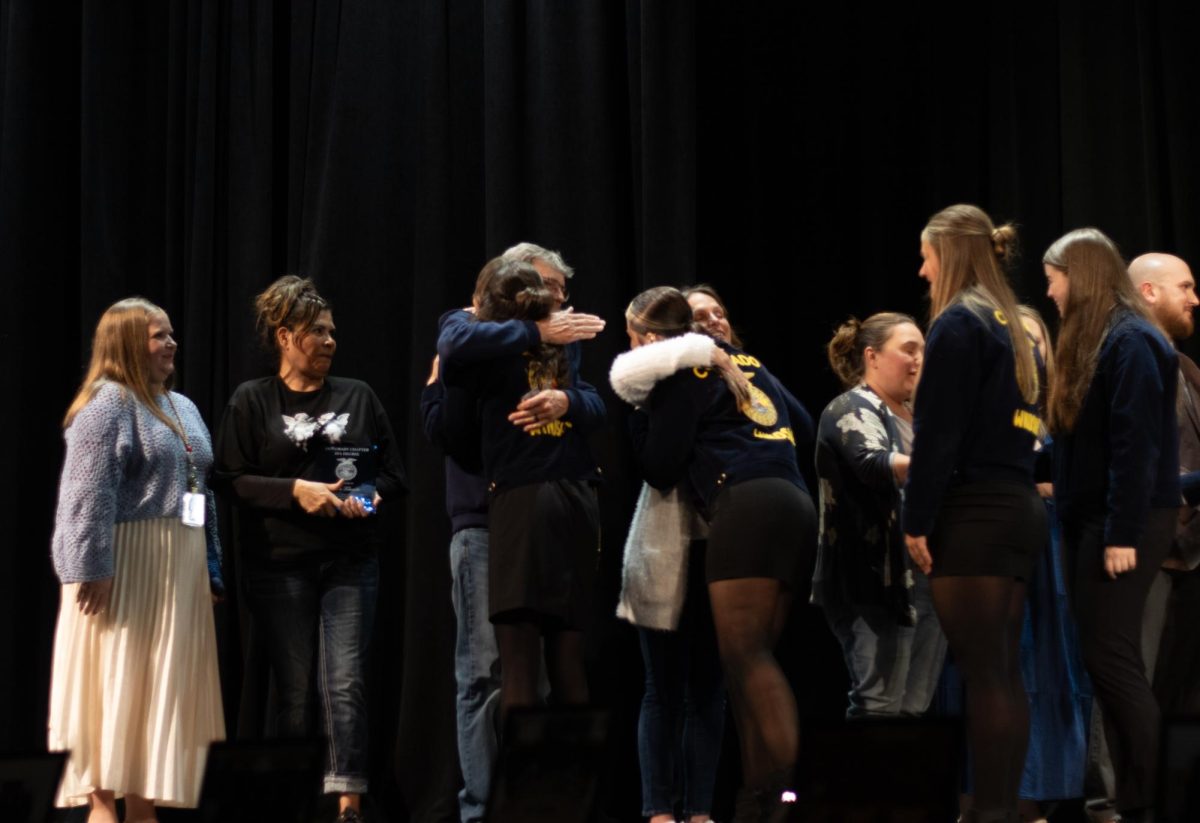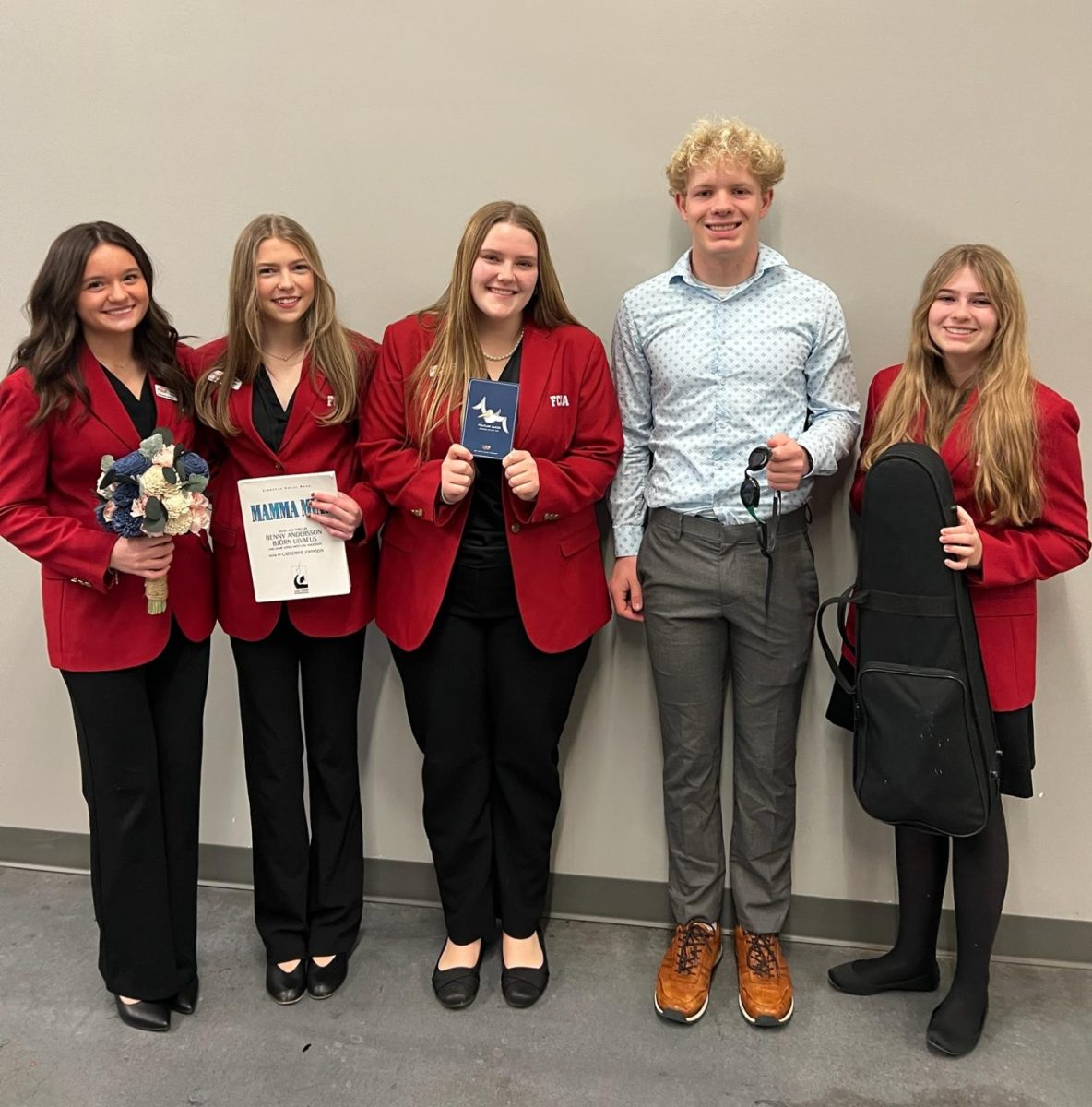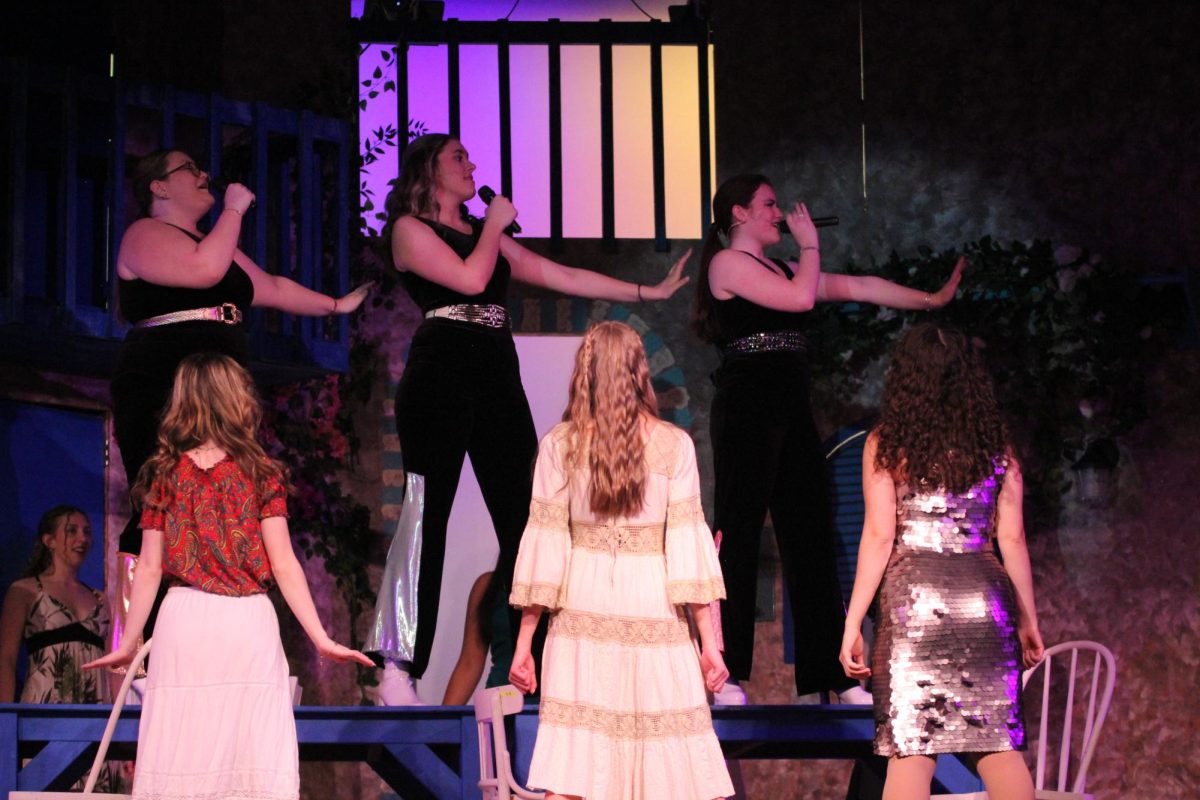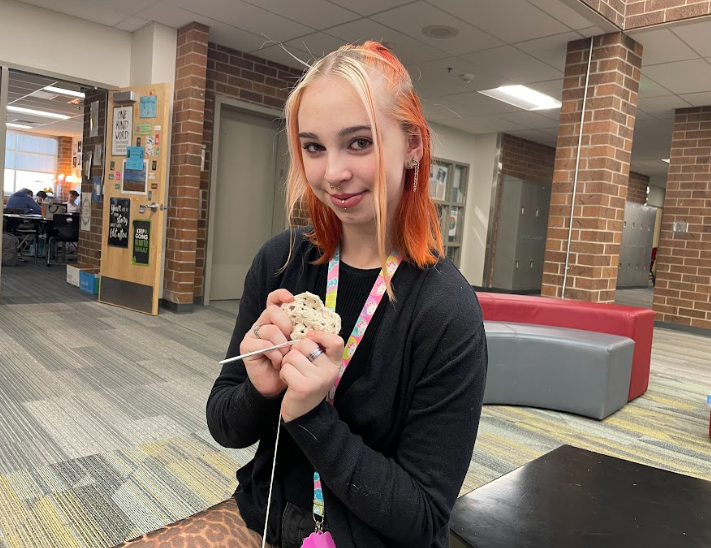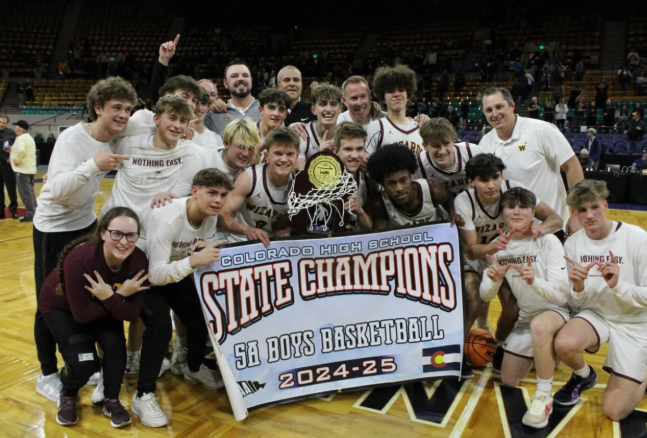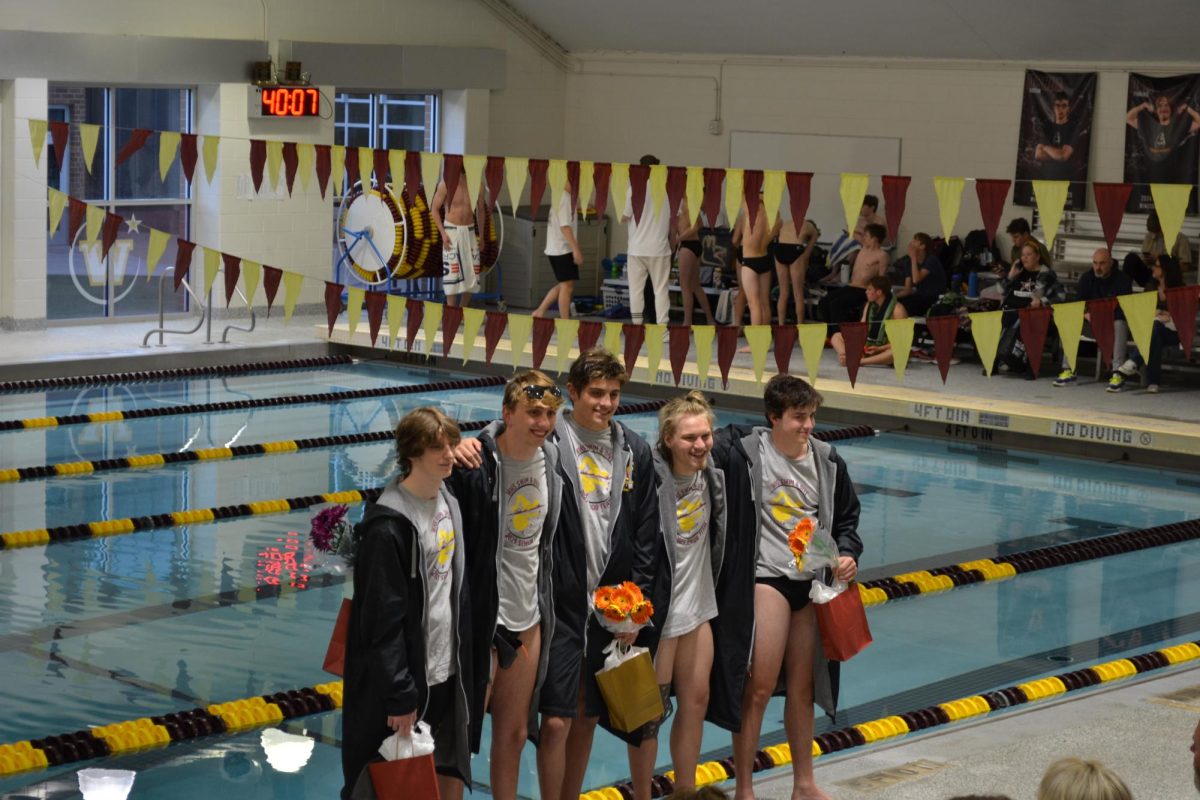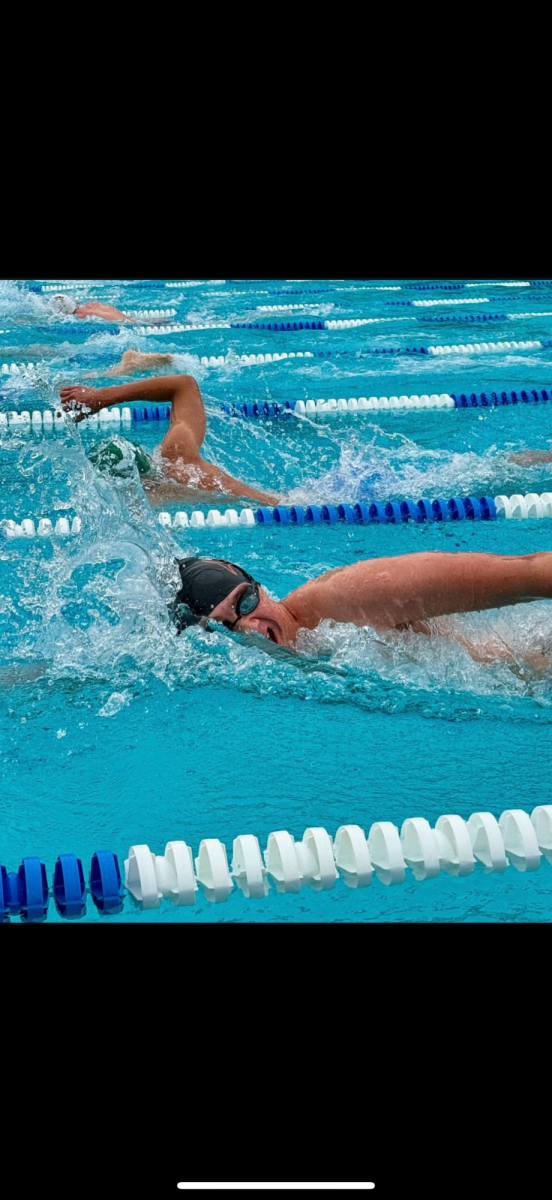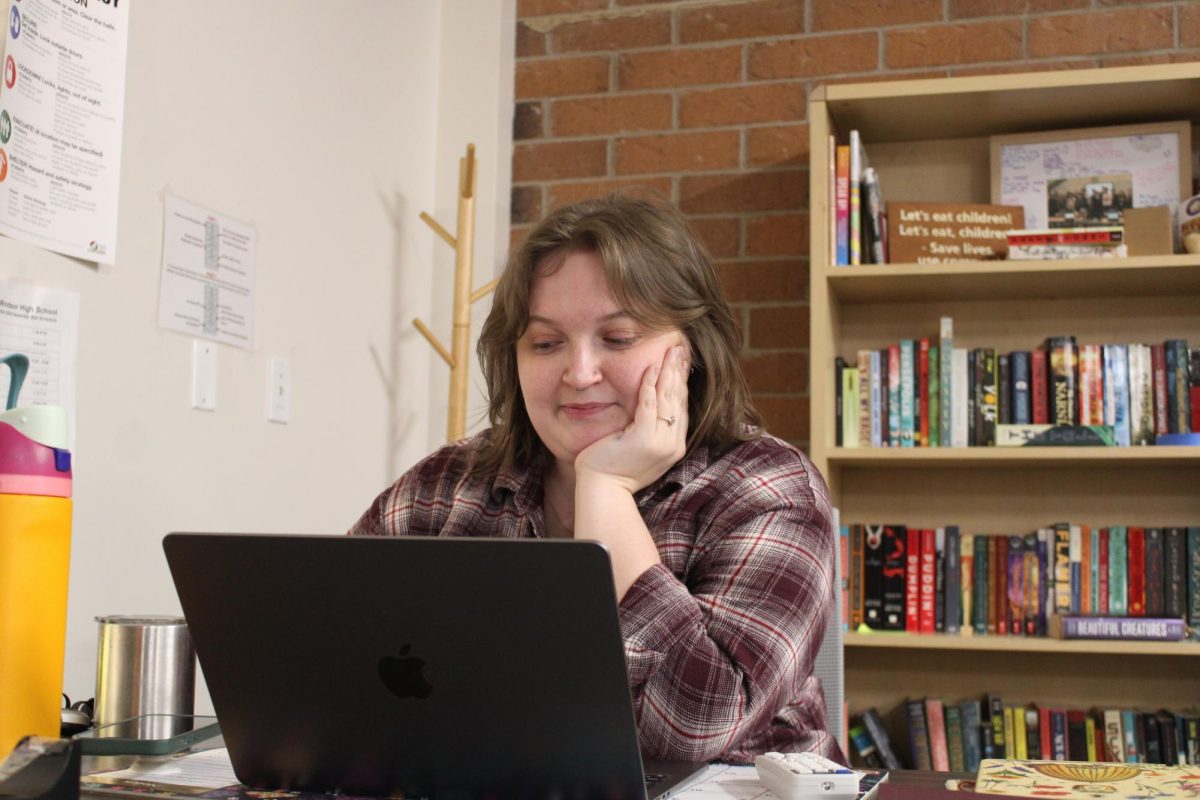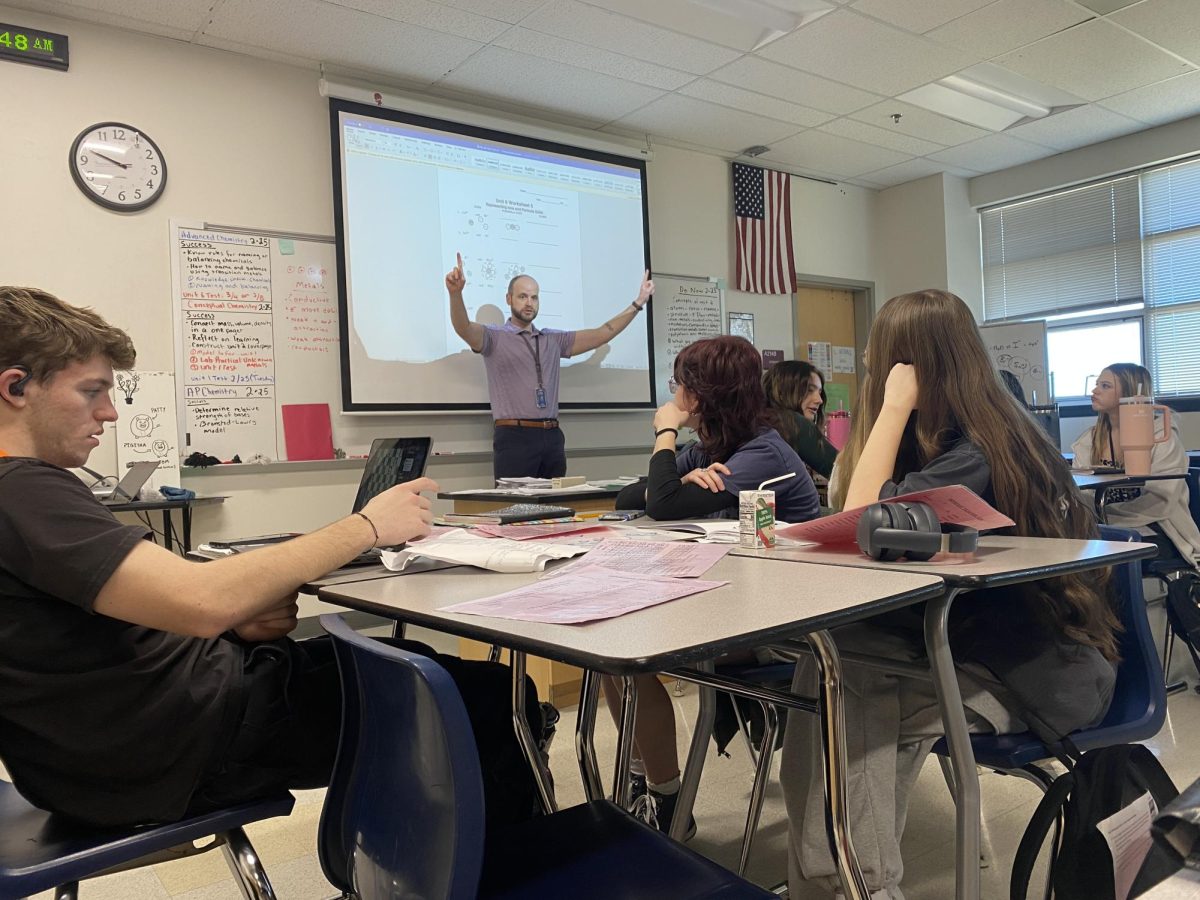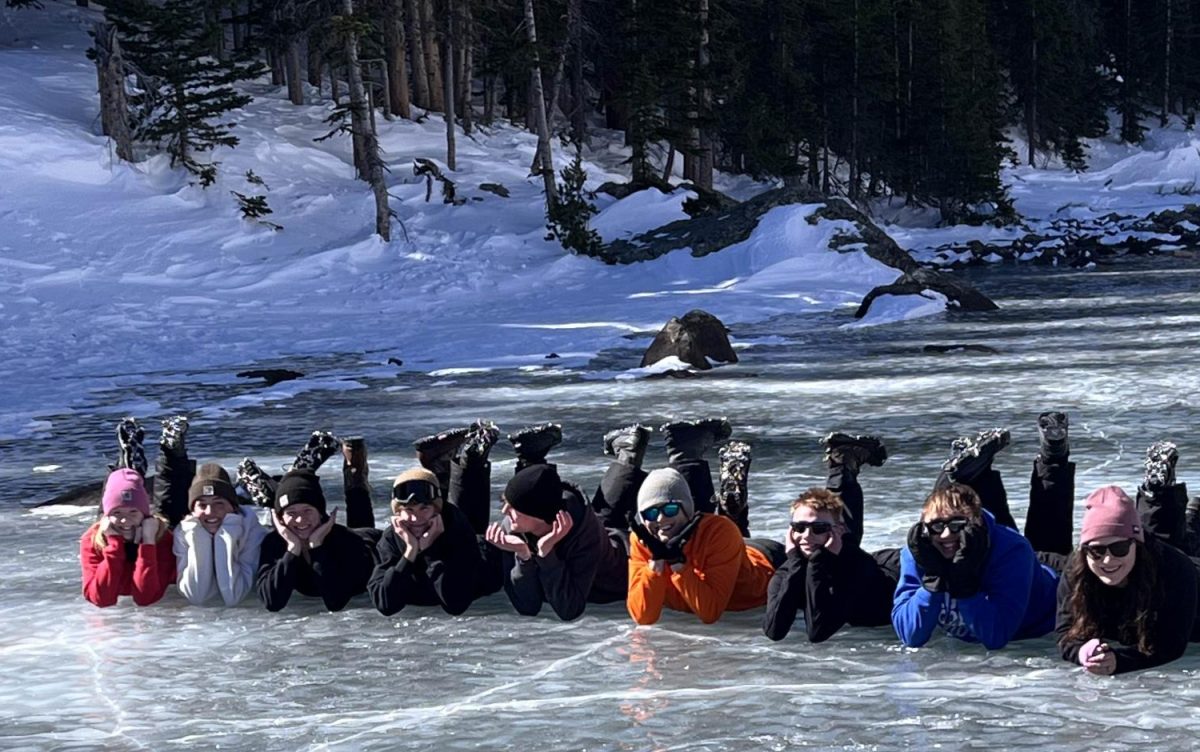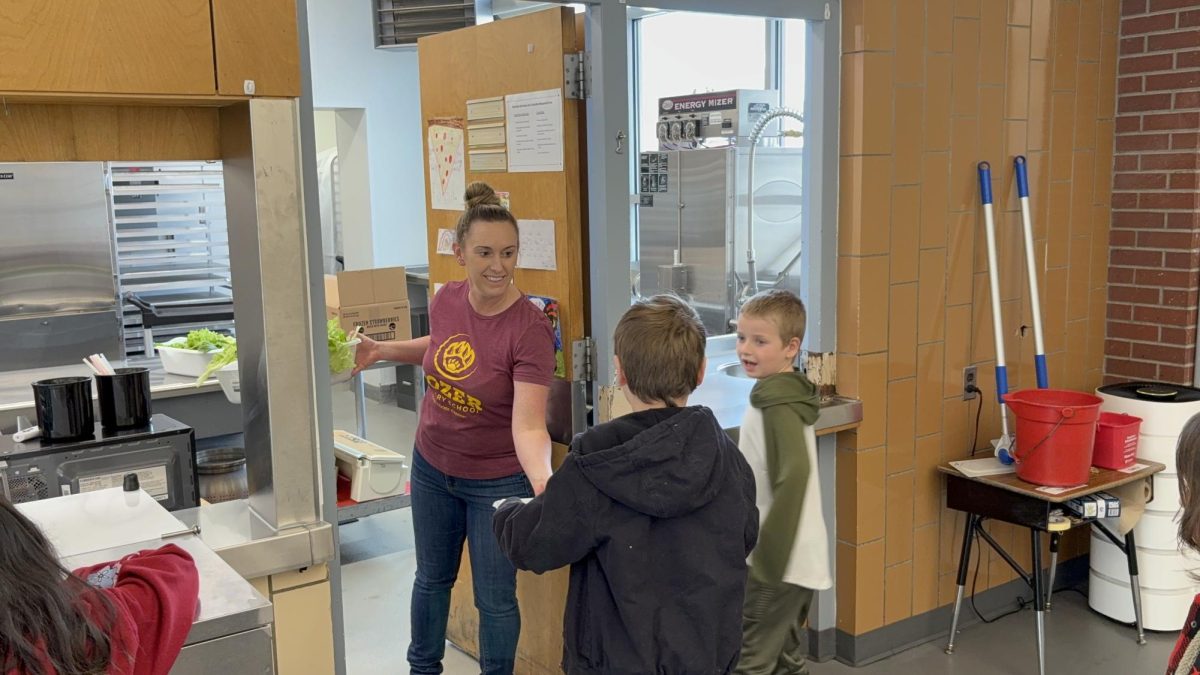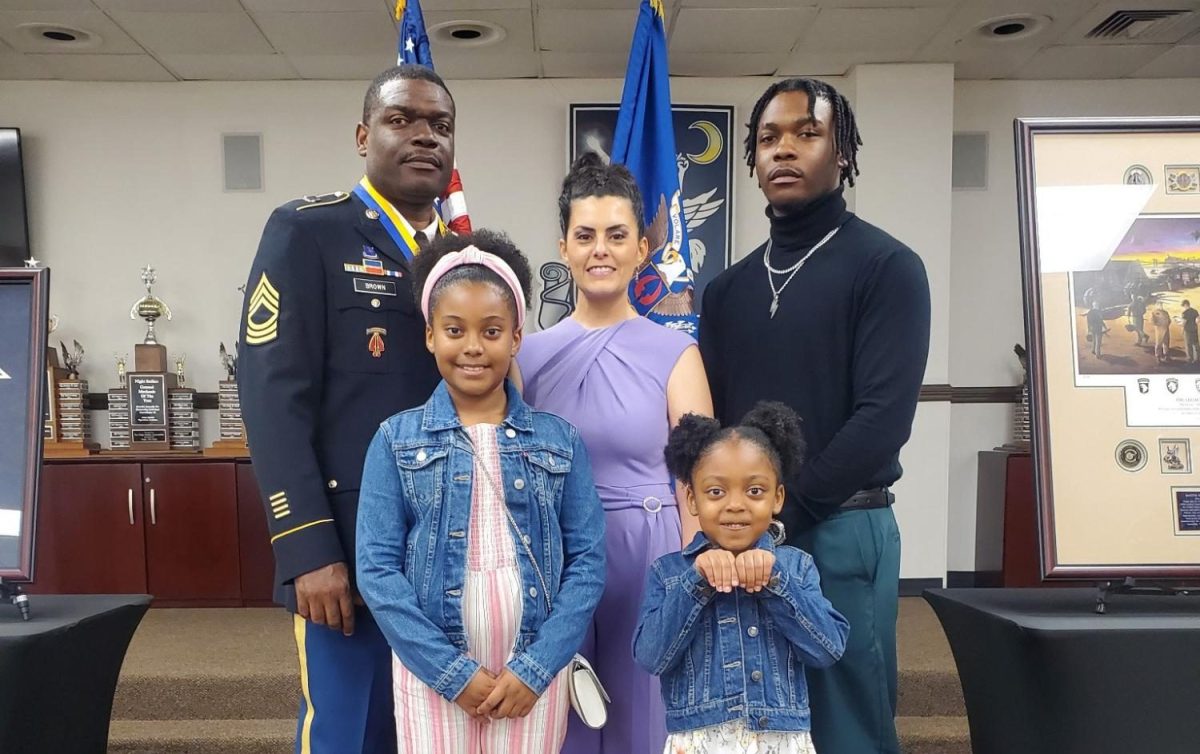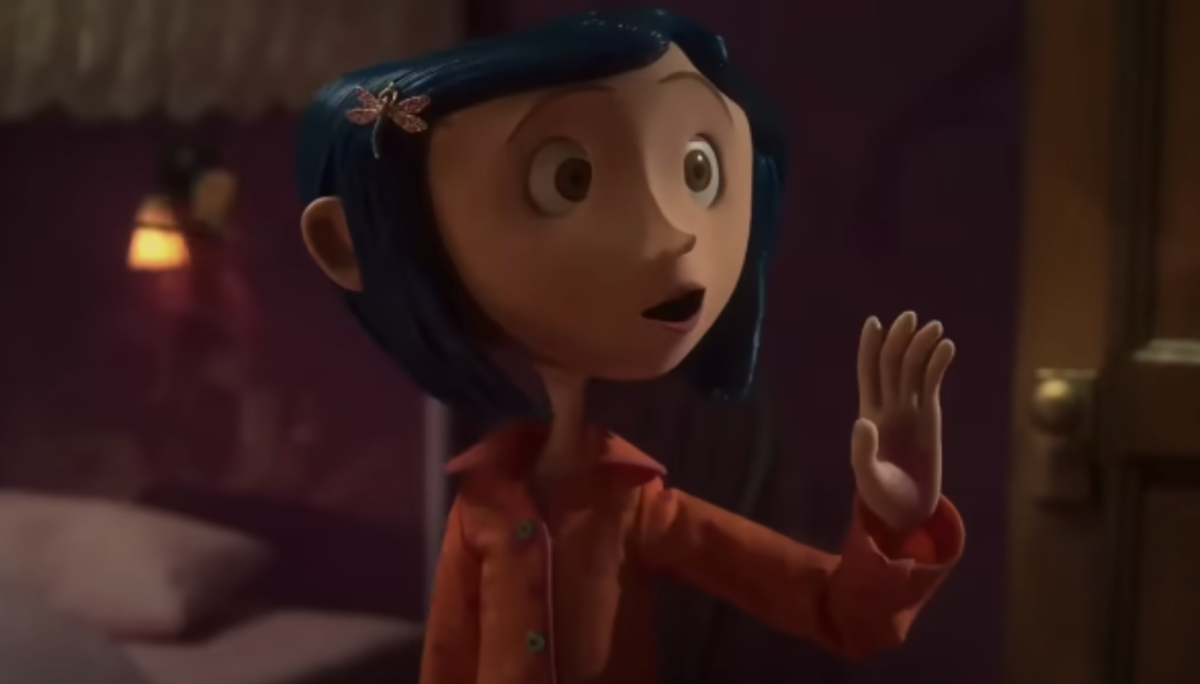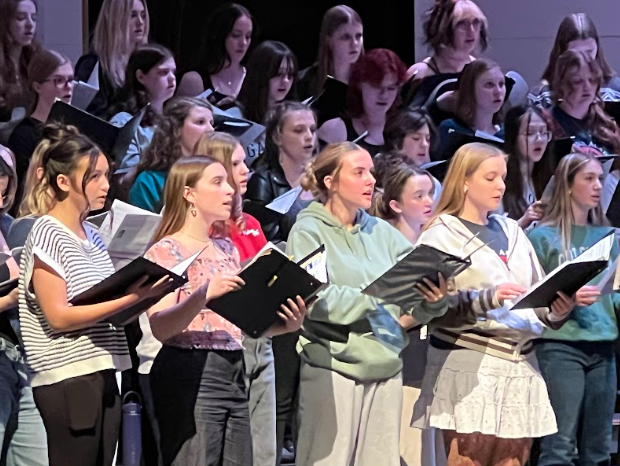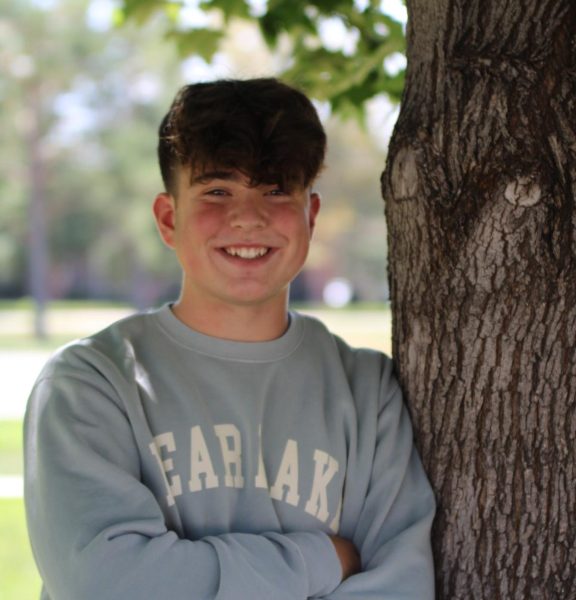As the iconic opening scene begins, chills run up your arms. There is something about the children’s voices mixed with the unsettling orchestration in the background that makes the scene both innocent and horrifying. The scenery of the poorly kept room, a drawer full of buttons, an old sewing machine and a pair of horrifying robotic hands sewing a new doll unravels as you stare perplexed at the screen
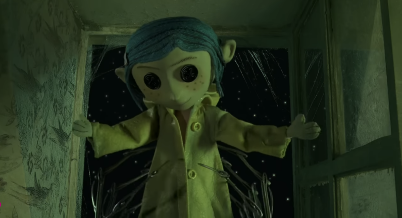
To follow the unraveling doll, a world then unravels; you see a moving truck barrel up a hill toward a home that states, “Pink Palace Apartment Suites.” The movers unload the truck and are tipped a total of $1 before they are sent on their way. The frame then shifts to a young blue-haired girl: Coraline. She travels out into the nearby woods where she will make a strange acquaintance with Wybie Lovat, a young boy wearing a long coat, a skeleton mask and skeleton gloves. His grandma owns the Pink Palace, but he himself is not allowed in. How strange? They quarrel for a bit, and the girl goes back home for the night.
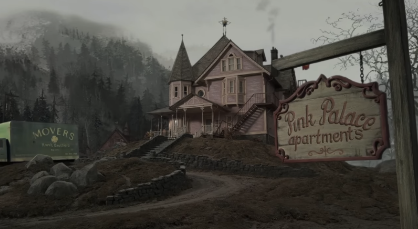
Coraline’s parents appear to be incredibly boring and emotionally unavailable. They work for a gardening catalog and they never have time for the young girl, always ignoring her or giving her useless tasks to keep her occupied.
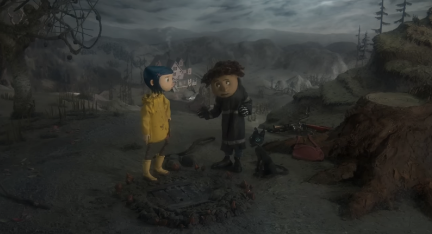
“Go out and count all the doors and windows, list everything that’s blue. Just let me work,” her father says. This leads Coraline to wander the house and write down anything remotely interesting that she sees. She then stumbles across a small door covered by wallpaper in the living room.
That night she is led to the small door, and instead of being bricked up like it had been before, there was a long tunnel. When she walked through, it only led her to what appeared to be her home, but everything was brighter. When she walked through the kitchen door, she saw her mother cooking. When her mother turns around, Coraline automatically realizes that this was not, in fact, her mother: she was much more put together, much prettier than her real mom and probably the most obvious thing was that she had buttons in place of her eyes. “You’re not my mother. My mother doesn’t have b-bb-b…” stutters Coraline “Buttons? I’m your ‘Other’ Mother, silly. Now go tell your Other Father that supper’s ready,” the Other Mother replies.
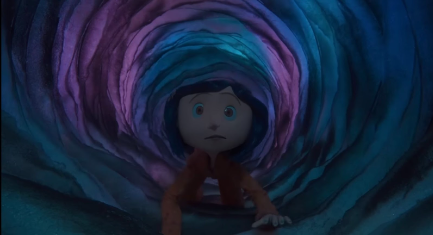
After the eerie encounter with the so-called “Other Mother,” Coraline makes her way to the study where the Other Father is playing piano. As Coraline walks into the room, the Other Father, who is dressed in an orange robe and has his hair done up neatly, spins around to greet her with a wide smile. It doesn’t take him long to break out into song. “Wanna hear my new song?” he asks. It is then that gloved hands burst from the piano and slip onto the Other Father’s hands and start making him play a silly tune.
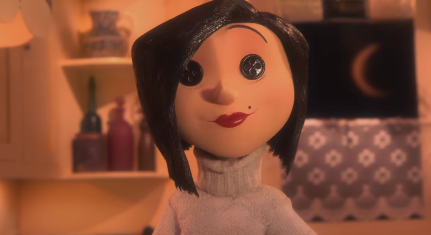
Little does Coraline know that this song would serve as a warning that something evil and supernatural is coming.
This Other Mother and Father are welcoming, fun and much more lively than her real parents, and it all was seemingly a dream; after all, when she went to bed, she woke back up in her own room.
That morning she meets the deranged Mr. Bobinsky who, strangely enough, adorns the medal given to those who helped at the Chernobyl incident. So that must be the reason that his skin is blue and he seems so out of reality, as he was in the presence of such a great amount of radiation.
Coraline then is forced by her (real) mother to go talk with the two circus women: Miss Spink and Miss Forcible. These two women give her candy so old that she can’t take it out of the candy jar. Then they present to Coraline their display of dogs that they stuffed because they “couldn’t bear to part with them.”
As Coraline struggles to keep herself from the endless echoing halls of boredom, she slips away to the other world yet again. There, she comes upon the magical garden that her Other Father planted for her, making it in the shape of Coraline’s face.
Afterward the two go inside to have breakfast for dinner, and, in that moment, Coraline really feels like she belonged.
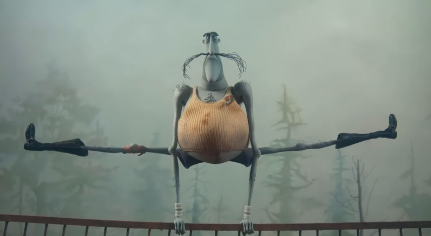
Coraline then visits the “other” Bobinsky with the other (new and improved) Wybie. This Wybie has buttons for eyes and cannot speak. “I thought you’d like him more if he spoke a little less, so I fixed him!” the Other Mother states with a smile.
And so, the two wander upstairs to watch Bobinsky’s jumping mice show. This performance is one of a kind with dancing mice dressed in toy soldier uniforms, complete with a catchy musical number. After the mice finish their part, Bobinsky is revealed and thanks Coraline for coming to the show. He gives her a kiss on the hand, which transitions us into a scene where Coraline is being tucked into bed by her Other Parents and Other Wybie.

She once again wakes up in the real world, where her mom takes her out to go shopping for some new clothes for the private school she will attend. Once again, she travels to the Other World, where a card is left for her to go watch Miss Spink and Miss Forcible’s show, but when she leaves, she comes across a cat, the same cat that had been following her around in the real world. But this cat was the real cat, not some “other” version; his one difference is his ability to speak.
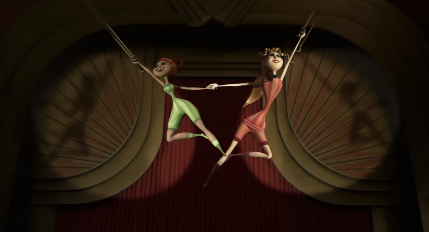
The cat warns Coraline of Other Mother’s true intentions: trapping Coraline in this world, drawing her in with everything Coraline could ever want.
As she visits the Other World more, she realizes it is harder to escape each time. In this third (and final) visit, Other Mother offers for her to stay — but for the price of sewing buttons into her eyes. When Coraline is offered this, she runs in fear, going to bed in the Other World and hoping to come back into reality; however, she wakes up yet again in the Other Mother’s trap.
Viewers can tell there is something a little strange about this Other Mother and her Other World, but now that she cannot go back, their suspicions have been confirmed. She makes her way through the house and ends up in the living room, but it’s a little… different.
The furniture has been replaced with massive insects and the colors have become dark and ominous. The Other Mother sits in one of the “bug chairs” and snacks on come chocolate beetles. Coraline raises her voice and tells her that she wants to go home. The Other Mother, after transforming into an elongated version of her other mother, throws Coraline into an imprisoned room behind the mirror in the hallway. Here, she will find the key to escaping.

Coraline meets three ghost children: the ghost boy, the tall ghost girl and the sweet ghost girl. They have buttons for eyes and their faces are permanently contorted into looks of distress. They explain that they are the previous victims of the Other Mother — or the Beldam — as the ghosts call her.
Beldam has many roots for its meaning, but one of the most notable is “La Belle Dame sans Merci,” or “The Beautiful Lady without Pity,” by John Keats. This woman lured in knights who wanted love, took them to a secluded region and left them to die.
The Beldam, much like Keats’ version, lures children in with love and affection, then traps them and takes their souls. “We let her sew the buttons, she said she’d love us, but she locked us here, and ate up our lives,” the ghosts share. They tell Coraline that if she wants to win, she must find their eyes so that their souls may be set free.

Just then she is removed from the prison, by Wybie, and he helps her make a narrow escape back into the real world. When she gets back, she will realize that her parents are missing and that her Other Mother had taken them and trapped them in some sort of trap behind the mirror in the real world. Coraline must go back for her parents and the ghosts’ eyes.
She returns to confront the Beldam, but she must be smart. She offers to play a game with her. If Coraline finds the ghost eyes and finds her parents, the Beldam must give them back to her and set the children free. But if Coraline loses, she will stay and let the Beldam sew the buttons. The Beldam happily agrees and gives a little hint: “In each of the three wonders I have made for you, a ghost eye is lost in plain sight.” And with that, Coraline sets out to find the ghost eyes.
When the Beldam says “wonders,” Coraline figures out that she is referring to the three different settings that lured her in: the garden, the circus and the theater. The way the riddle is worded makes it seem like it should be really simple. “Lost in plain sight” sounds like this puzzle would be over in 30 minutes tops. But boy, oh boy, is that not the case.
- The first place she travels to is the first of the wonders: the garden, where she is attacked by a large mechanical praying mantis, which is controlled by the Other Father. Before he disappears into the pond, he apologizes to Coraline and hands her the first pair of eyes.
- She then travels to the Miss Spink and Miss Forcible. When she walks in to the theatre, she sees them in some sort of cocoon; Coraline reaches in to grab the eyes only to be attacked by the two sisters, but instead of normal creatures, they are mangled pieces of taffy twisted together. To get free, Coraline summons the dog bats hanging from the ceiling, moving out of the way just in time to escape.
- Afterward, she goes to Bobinsky’s attic, where she is ambushed by cotton candy and a hoard of rats, but after hard work, and the help from the cat, she succeeds in finding all of the eyes. Her last task is now to find her parents.
After finding the eyes in each of the “three wonders,” the world starts to fall apart: a sign that the Other Mother is losing her power. When she goes back into the house, she finds the Other Mother even more decrepit than before: large and spindly, with four legs and a cracked face, much in resemblance to an insect.
After a short realization that her parents are trapped in the snow globe on the mantel, Coraline comes up with a plan, tricking the Other Mother into thinking that she thinks her parents are behind the door, so when the Other Mother is distracted, she grabs the globe with her trapped parents, throws the cat at her so that it can blind her and she makes a run for it.
Just before she is able to, though, the world fully crumples into a large spider web. Coraline must make her final decisions carefully, and as she scales up the web toward the door, she comes deathly close to being caught by the Other Mother. But with the help of the ghost children, she pulls the door shut and she finally escapes into the real world.

At her home she finds her parents safe and sound, and everything seems to go back to normal.
Although, she is soon warned by the freed ghost children that she is in grave danger and must dispose of the key forever. As she does so, she is attacked by the hand of the Other Mother that had escaped, but with the help of Wybie, they ultimately defeat her and throw both the remains of the hand and the key into a well.

The scene then cuts to the residents of the Pink Palace rebuilding the beauty of the garden: planting flowers and tending to the land. The scene slowly backs away as Mrs. Lovatt (Wybie’s grandmother and owner of the Pink Palace) walks in, and Coraline starts to tell the crazy story.
As the camera zooms away from the (hopefully) happy ending, the camera shows the cat as he disappears behind “The Pink Palace Apartments” sign. Now we are left to wonder if Coraline actually ever left the other world, and if she actually did win, or if it was just another of Other Mother’s tricks.
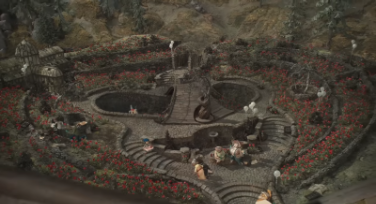
Now as the viewers watch, they must wonder if everything is actually okay, whether or not to feel at peace with this ending and why this is a kids’ movie. Many may think, “What the heck did we just watch?”
When watching this movie, viewers feel so many emotions: happiness, fear, anticipation and maybe even a little love for their favorite character. This stop-motion story holds so much power over viewers and leaves them clinging to the edge of their seats, waiting for what’s going to happen next. The characters have a unique and eye-catching design and the set has distinct color schemes for the two different worlds. This 2009 movie has left watchers both in awe and horrified with the storyline and content for years now. It is either a fan favorite or a childhood nightmare.
Coraline is a wonderful movie for mystery- and adventure-lovers alike, and it is a brilliant cinematic adaptation to the original story by Neil Gaiman.




